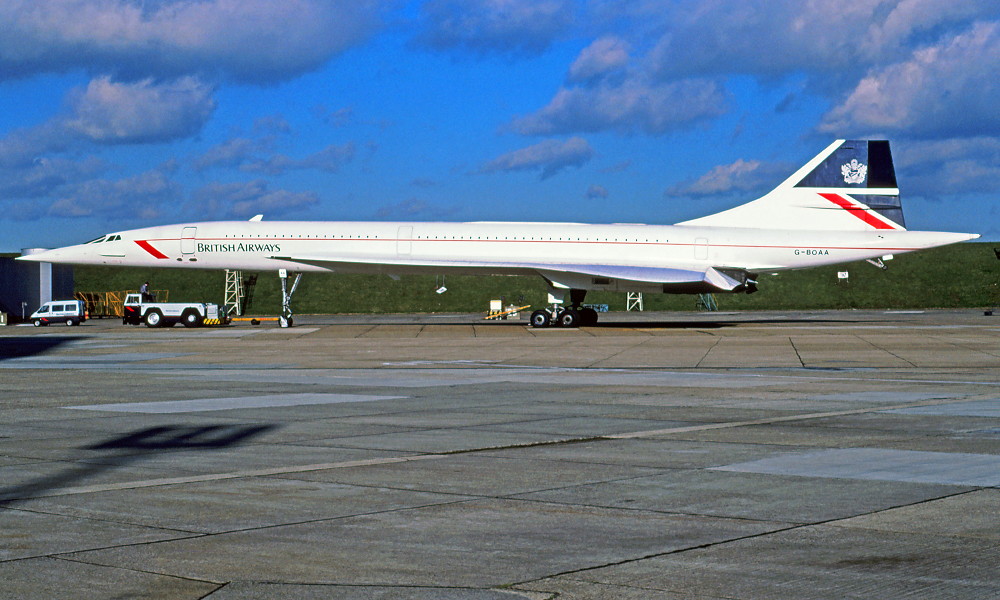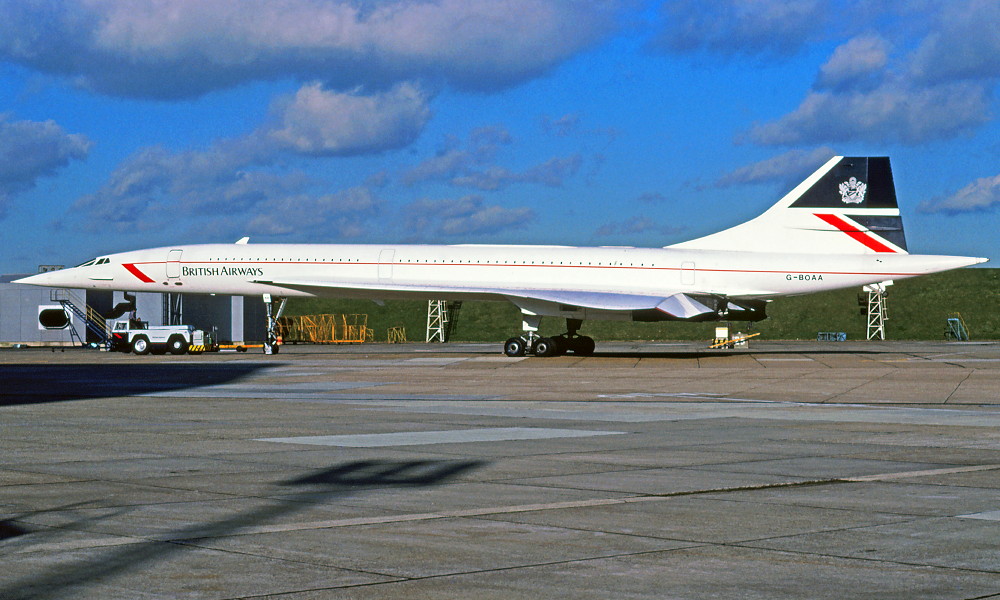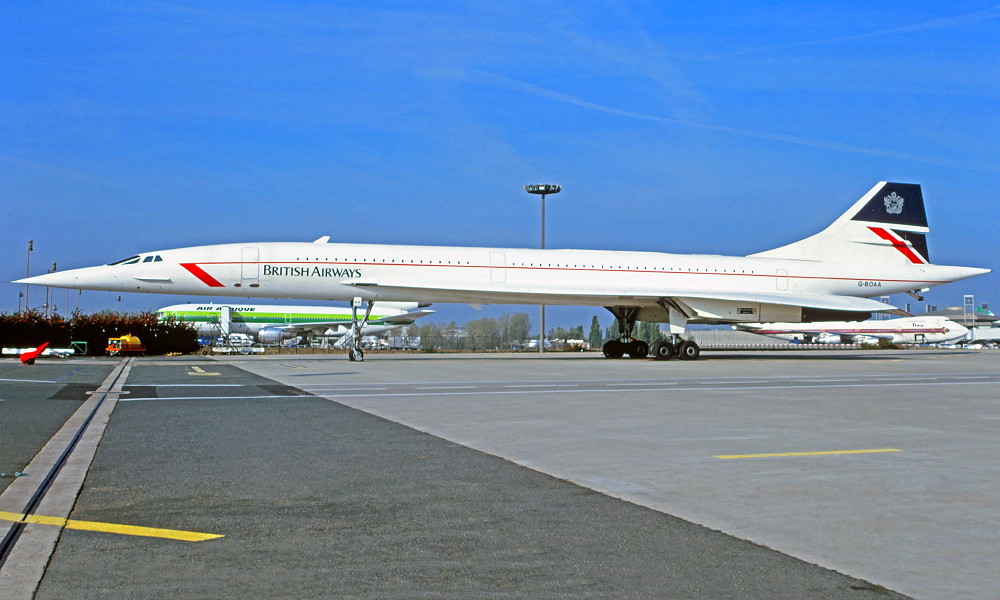G-BOAA. British Aircraft Corporation Concorde 102. c/n 206.
This aircraft was built by British Aircraft Corporation at the Filton, Bristol plant. It was entered onto the British Aircraft Register as G-BOAA (CofR R.14255) on April 3, 1974 and registered to the British Aircraft Corporation. It flew for the time from Filton on November 5, 1975. It was subsequently registered to British Airways on January 13, 1976. This was the first Concorde to be delivered to British Airways at London Heathrow after a 42 minute flight from RAF Fairford on January 14, 1976. Its inaugural flight from London - Bahrain, under the command of Captain Norman Todd, was flown on January 21, 1976. G-BOAA operated its first trans Atlantic service London (Heathrow) - New York (JFK) under the command of Captain Brian Walpole on November 22, 1977. It was re-registered G-N94AA / N94AA to British Airways / Braniff Airways on January 12, 1977 to comply with American registration requirements for the operation of the aircraft across continental USA. Following the aircraft's arrival at New York / Washington DC from London, the aircraft was used by Braniff Airways to fly its Washington DC / New York - Dallas Fort Worth service and return. It was returned to its original registration of G-BOAA and registered to British Airways on July 28, 1980 when the joint operating arrangement with Braniff Airways on this aircraft was terminated. Following a sequence of rudder delaminations in flight G-BOAA fitted with a new rudder costing some £1 million. G-BOAA operated in formation with the RAF Red Arrows over Heathrow Airport, London, under the command of Captain Mike Bannister, to celebrate the 50th anniversary of the west London Airport (which was Concorde’s home while operating for British Airways)on June 2, 1996. It operated its final revenue service with British Airways when it flew New York (JFK) - London (Heathro) on August 12, 2000. Following the crash of Air France Concorde F-BTSC at Charles de Gaulle, Paris on July 25, 2000, G-BOAA was never fitted with the 'return to flight modifications' that had been mandated by the aircraft's manufacturer and the relevant airworthiness authorities. It had been due to have its C-Check, and was to have been the 7th and final aircraft in the British Airways fleet to have been modified and returned to flight status. It remained in storage at London (Heathrow) Airport until it was cancelled from the British Aircraft Register on May 4, 2004. It was subsequently dismantled and transported by road from Heathrow to the Thames River, and then by sea to Torness, Scotland, and then again by road to the National Museum of Flight (run by National Museums Scotland), East Fortune, Edinburgh on April 8 - 19, 2004 where it was placed on static display. G-BOAA had flown a total of 22,768 hours and 56 minutes with 8,064 cycles. It flew a total of 6,842 supersonic speed cycles. |
 |
G-BOAA. British - in the revised livery at an unknown airport, April 1981. (R. N. Smith Collection Copyright Image 1926-054.) |
 |
G-BOAA. British Airways - in the new livery at London Heathrow Airport, December 1986. (R. N. Smith Collection Copyright Image 1926-055.) |
 |
G-BOAA. British Airways - in the new livery at London Heathrow Airport, December 1986. (R. N. Smith Collection Copyright Image 1926-056.) |
 |
G-BOAA. British Airways - in the new livery at Charles de Gualle Airport, October 1990. (R. N. Smith Collection Copyright Image 1926-057.) |